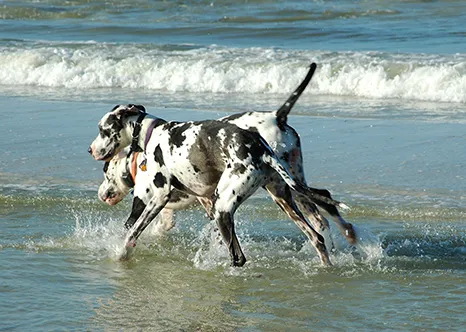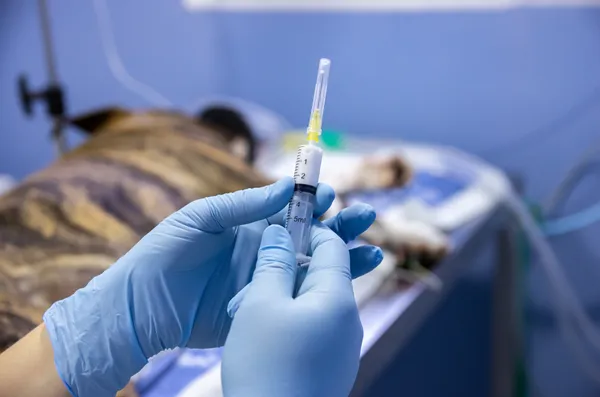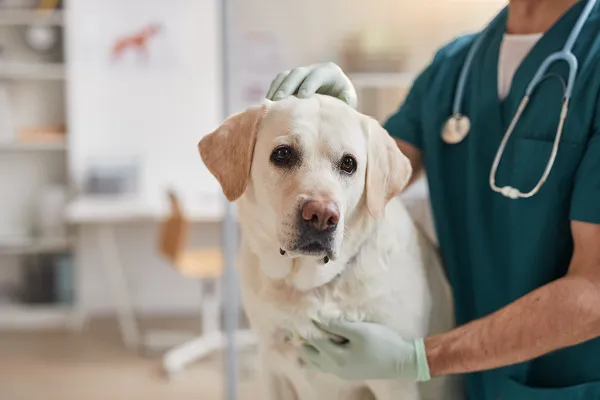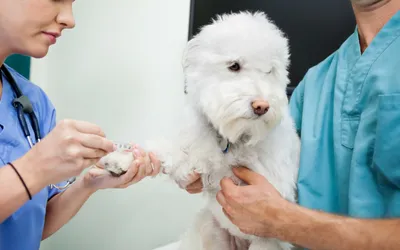Bowel Incontinence in Dogs

Bowel incontinence is the loss of the ability to control bowel movements. There are two broad causes of fecal incontinence: reservoir incontinence and sphincter incontinence. In reservoir incontinence, intestinal disease interferes with the rectum’s ability to store normal volumes of feces. In sphincter incontinence, a structural or neurologic lesion prevents the anal sphincter from closing normally. Clinical signs, diagnostic testing, and treatment vary based on the underlying cause.
Bone Diseases of Growing Dogs

This handout summarizes the most common forms of lameness in growing dogs. Included are osteochondritis dissecans (OCD), panosteitis, hypertrophic osteodystrophy (HOD), elbow dysplasia, ununited anconeal process (UAP), fragmented coronoid process (FCP), patellar luxation, and hip dysplasia. Clinical signs for each of these conditions, along with treatment options, is discussed.
Anesthesia for Dogs

Anesthesia is accomplished by administering drugs that depress nerve function. It is important that you fully understand what will happen to your pet, and that you understand the risks. Anesthetic monitoring in a veterinary hospital is like that found in any human hospital. With today’s anesthetics, many of which are reversible, your pet should be almost completely normal by the time of discharge.
Wellness Testing for Senior Dogs

Regular wellness exams and laboratory testing are designed to detect hidden disease in senior dogs, allowing earlier intervention to manage or slow the progress of the disease. Typical testing in senior and geriatric dogs includes complete blood count (CBC) that assesses the red blood cells, white blood cells, and platelets; a biochemistry panel that provides information about the organs, electrolytes, blood sugar, and proteins; urinalysis that assesses kidney function and can identify inflammation or infection in the urinary tract; and a thyroid test to screen for hypothyroidism.
Exercises to Improve Proprioception

Proprioception is the ability to know where your body is in space. This is what helps reduce falls and injury. Proprioception may be lost suddenly through spinal cord trauma, or it may be reduced with age, joint disease (osteoarthritis), or other orthopedic or neurologic disease. Some specific controlled exercises that can improve proprioception are discussed. Any exercise plan needs to be formulated by a veterinary rehabilitation therapist to avoid injury.
Lysosomal Storage Diseases in Dogs

Lysosomal storage diseases are a rare collection of conditions that are inherited. Many of them are more prevalent in certain breeds and are seen in the first few months of life. Clinical signs vary depending on the type of disease, but commonly include failure to thrive, incoordination, vision loss, and seizure. Prognosis is usually poor for long-term survival.
Hemophilia A & B in Dogs

Hemophilia A and B are clotting disorders involving a deficiency of a specific clotting factor (A: Factor VIII, B: Factor IX) needed for appropriate homeostasis. They are caused by a sex-linked recessive genetic mutation. Affected dogs will show inappropriate hemorrhage including bruising, lameness induced by bleeding into joints and body cavity hemorrhage. It can be diagnosed with a slow APTT and demonstrating low levels of the factor involved. Hemophilia A is more common than B and is generally, more severe. Because it is sex-linked recessive, males are more likely to be affected than females but females still act as carriers, so genetic screening is important prior to breeding to prevent this disease.
False Pregnancy or Pseudopregnancy in Dogs

False pregnancy refers to a display of maternal behaviors, combined with the physical signs of pregnancy following estrus, in unspayed female dogs that are not actually pregnant. Signs include physical and behavioral changes, outlined in this article. Mild cases typically are not treated, but treatment may be needed for more serious cases. If your dog is not used for breeding, spaying is recommended.
Estrus and Mating in Dogs

Estrus (heat) begins when a female dog reaches sexual maturity and occurs about twice per year, although it varies from dog to dog. From the beginning of a female’s estrus period, she will be attractive to male dogs, though she will usually not be receptive or allow mating until seven to ten days into her cycle. The time of mating is extremely critical and it is highly recommended to have your female tested to determine the optimal days for breeding.
Estrous Cycles in Dogs

Female dogs will have their first estrous (reproductive or heat) cycle when they reach puberty. Each cycle consists of several stages; the stage called estrus refers to when the female can become pregnant. This handout explains the cycle stages and signs as well as how to prevent mating and pregnancy in your female dog.

